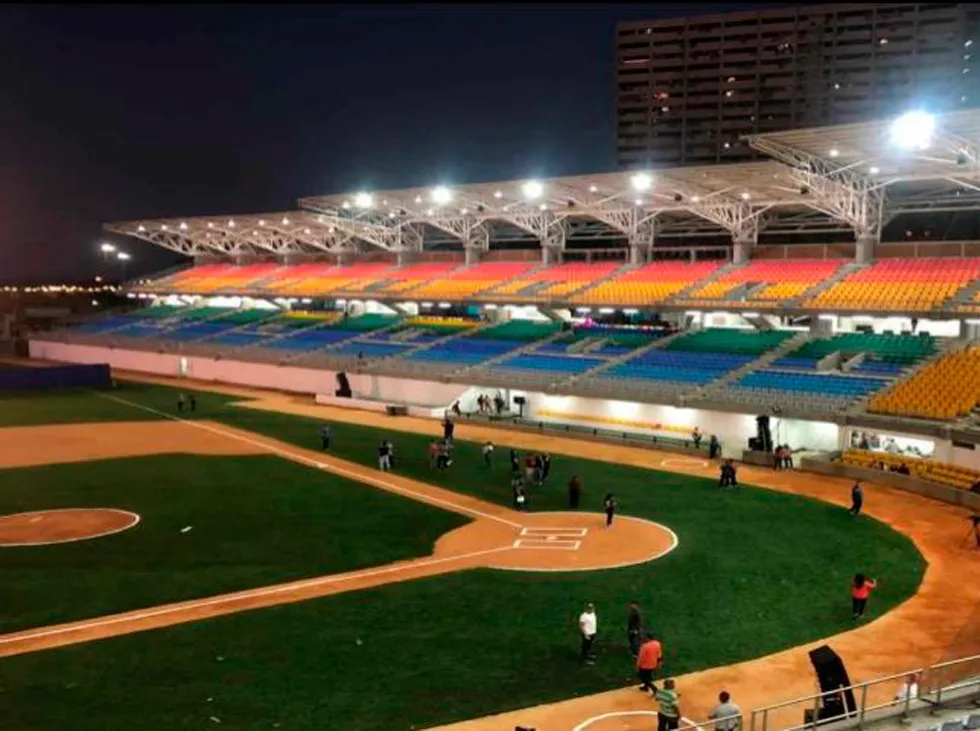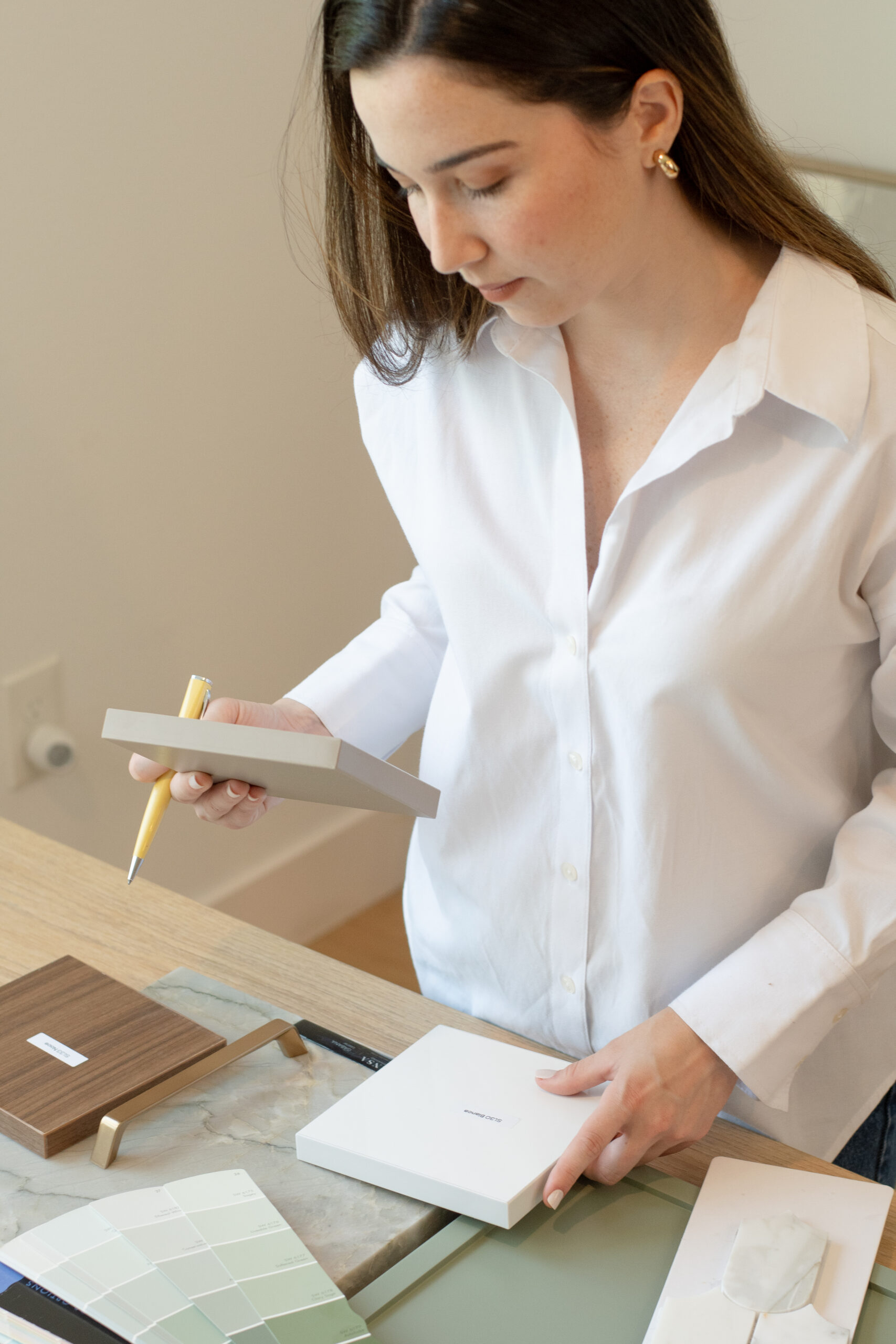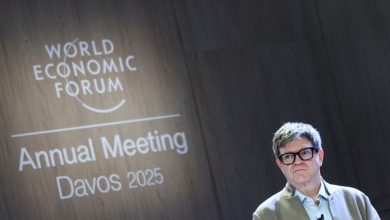Venezuelan Architect Andrea Barreto Talks the Ambitious Design of the Fórum La Guaira Stadium

Andrea Barreto, a Venezuelan architect based in Florida, known for her meticulous approach to interior design and her ability to shepherd projects from inception to completion, recently shared insights into her pivotal role in the design and construction of the Fórum La Guaira stadium in Venezuela. The high-profile project, a testament to collaborative effort and rapid execution, demanded an exceptional level of skill in managing complex design processes and delivering a world-class facility.
Barreto, who also founded The Creative Session, an initiative focused on sensory design and well-being, brings over six years of specialized experience in high-end residential and commercial design to her work. Her portfolio includes luxury interiors, cultural centers, sports facilities, and healthcare spaces, with a consistent emphasis on blending aesthetics, functionality, and emotional resonance. Her involvement in the Fórum La Guaira stadium project, however, presented a unique set of challenges and rewards that significantly shaped her professional trajectory.
Navigating Complex Design Processes Under Pressure
Reflecting on the Fórum La Guaira stadium project, Barreto described the experience as akin to an accelerated post-graduate education. “Being part of such a large-scale project with national impact felt like going back to school,” she stated. The project demanded close collaboration with an exceptionally skilled interdisciplinary team, encompassing mechanical engineers, lighting experts, construction professionals, and fellow designers. “It wasn’t just a high-profile project; it also had a defined completion timeline,” Barreto recalled. “Looking back, I can say it was an incredible experience, but at the time, it meant learning how to manage stress, tight deadlines, and cutting-edge designs that had to be executed within a specific timeframe.”
A significant aspect of the stadium’s design was meeting the stringent requirements of Major League Baseball (MLB). “Meeting all the MLB’s requirements was definitely a challenge—but one I would take on a thousand times over,” Barreto affirmed. “It was an amazing professional and personal journey.” This experience honed her skills in precision planning, compliance adherence, and efficient problem-solving under demanding circumstances.
A Vision for Fan Comfort and Player Dignity
The overarching vision for the Fórum La Guaira stadium was to create an exceptional experience for both its spectators and its athletes. “The vision for the stadium was not only to satisfy the fans but also to create comfortable and dignified spaces for the players,” Barreto explained. The coastal location presented a considerable hurdle, particularly concerning material selection due to the corrosive effects of salt air and high temperatures. “Building by the sea is no easy task, so the selection of materials was a major challenge—not only due to corrosion but also because of the high temperatures,” she noted.
The design team prioritized user comfort, meticulously selecting materials that would mitigate heat and enhance the overall fan experience. A new VIP area was conceived, offering an innovative and sophisticated space distinct from anything previously seen in Venezuelan stadiums. Furthermore, the under-stand areas, originally planned as shops, were reimagined to host guests, creating a novel hybrid of hospitality and retail. “We also reimagined the space beneath the stands: initially planned as a shopping center, it was later adapted to accommodate guests, creating a hybrid between hospitality and retail. It’s a completely new concept,” Barreto elaborated.
The Crucial Role of Lighting
While aspects of the stadium’s lighting were outside her direct expertise, Barreto emphasized the valuable collaboration with IBB, the company responsible for the lighting design. “Well, that’s not my area of expertise, but working alongside the company IBB, who were in charge of the lighting, was a great experience,” she commented. From a design perspective, the focus was on functionality and achieving optimal visual conditions.
“Lighting is such an interesting field—it was fascinating to see how they designed the circuits and how they considered shadows on the field. Making sure the ball wouldn’t cast a shadow on the player was something really impressive,” Barreto stated, expressing her admiration for the lighting professionals.
Conquering Deadline Challenges and Ensuring Seamless Flow
Without question, meeting the stringent delivery deadline for the stadium’s grand opening stood out as the project’s most significant challenge. “Without a doubt, meeting the delivery deadline was one of the biggest challenges,” Barreto confirmed. “For a project of such scale and significance, staying on schedule for the grand opening required highly detailed planning—but we pulled it off, and the results were incredibly rewarding.” The dynamic nature of the construction process, where the design team provided plans that were immediately utilized by the building crews, underscored the need for exceptional coordination and speed.
“It was an unforgettable experience to be designing while the construction team was literally waiting for the plans to start building immediately—and by that same afternoon, the space was ready. That level of coordination and speed in design and construction is truly impressive. Dávila Construction deserves an award for handling that kind of pressure,” she exclaimed.
Accommodating large volumes of people within the stadium was a key consideration, addressed through thoughtful design and an outstanding interdisciplinary team.
“With an outstanding interdisciplinary team, without a doubt! It was truly a team effort—and that’s what made this project such a success,” Barreto emphasized. The engineering and architecture teams implemented two large access and exit points, complemented by wide corridors, to ensure efficient circulation for spectators. The stadium’s integration with its coastal surroundings further enhanced the sense of openness and accessibility, with generous surrounding areas contributing to a positive user experience.
“The stadium’s location is truly unique, blending naturally with the coastal belt and inviting people into the space. The flow around the stadium is generous—not just because of the structure itself, but also thanks to the surrounding area. Having a large parking area was also a top priority and a major accomplishment.”
Rewarding Collaboration and Swift Execution
The rewarding aspects of the Fórum La Guaira project extended beyond the final structure. Barreto highlighted the unique experience of witnessing the immediate translation of design concepts into built reality. “I believe this is an experience I’ll hardly live in again—and I’m not just talking about the scale of the project, which I truly hope to experience again, but about designing a space and seeing it built just a few hours later.That’s definitely not common,” she said.
The project underscored the critical importance of meticulous organization and seamless collaboration among all teams involved. “The importance of organization across all interdisciplinary teams. For this project to be completed in such a short timeframe, mistakes had to be minimal—and when they did happen, the response had to be immediate. There was simply no room for delays.”
Environmental Consciousness in Design
Sustainability and environmental consideration were also integral to the stadium’s design. Barreto pointed to the innovative use of an eco-panel roof, which significantly reduced interior temperatures without the need for mechanical cooling. “The stadium features an eco-panel roof that significantly reduces temperatures—it’s honestly quite impressive,” she stated. “You’re on the coast, right by the sea, and yet thanks to this roofing system, heat is not an issue. And just to clarify—it’s not a mechanical system, meaning there’s no air conditioning involved, but this solution was an excellent choice thanks to the team at SMG.”
Further environmental strategies included the use of aluminum composite panels and aluminum sandwich panels on the façade and interior, creating an air gap that aids in temperature regulation. The selection of specific glass types also contributed to reducing mechanical loads. Notably, the outdoor VIP area incorporated repurposed shipping containers, demonstrating a creative approach to sustainable material use and unique space creation.
Andrea Barreto’s involvement in the Fórum La Guaira stadium project showcases her adaptability, her commitment to excellence under pressure, and her ability to contribute to landmark architectural endeavors that prioritize both functionality and user experience. Her passion for human-centered design, evident in her current ventures and past projects, continues to shape her contributions to the architectural landscape.








